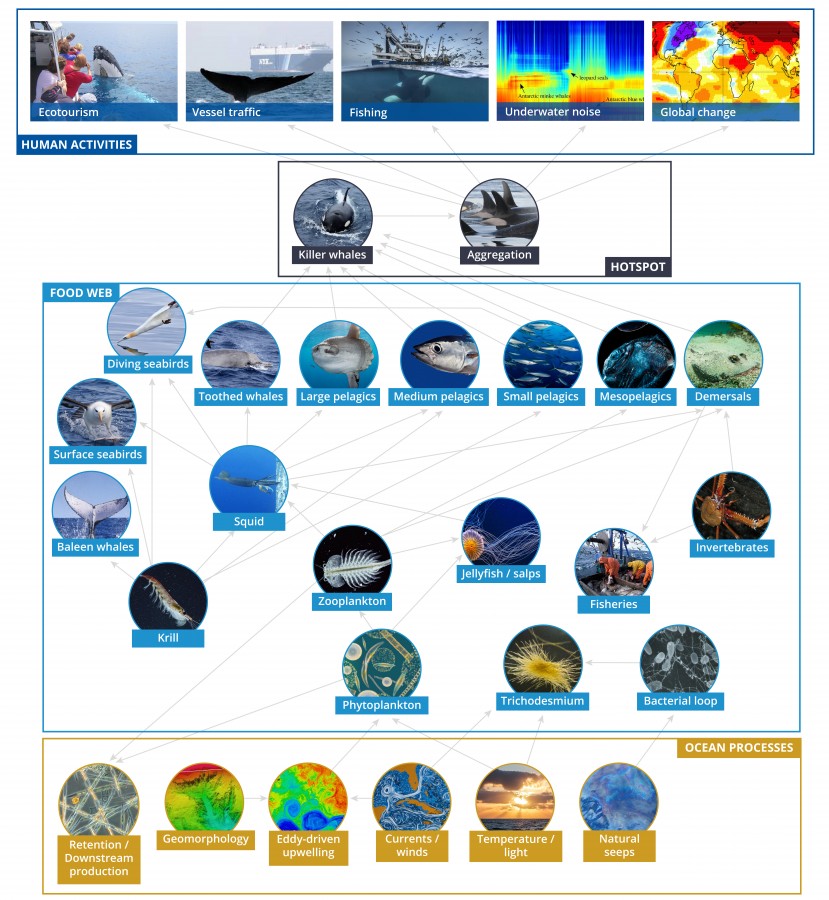Conceptual model of the Bremer ecosystem

© courtesy Adapted from Meeuwig et al. 2016
Notes
Meeuwig, J., Turner, J. and Bouchet, P. (2016) Bremer Canyon Science Workshop Report. NESP Marine Biodiversity Hub Emerging Priorities Project.
Photo credits: Ecotourism (MargaretRiver.com); Vessel traffic (NOAA National Marine Sanctuaries); Fishing (Audun Rikardsen); Underwater noise (Menze et al. 2017. Royal Society Open Science 4(1): art160370); Global change (NASA); Killer whales (Rebecca Wellard, Curtin University & Project ORCA); Aggregation (Center for Whale Research); Toothed whales (Wellard et al. 2016. PLoS ONE, 11(12): e0166670); Large pelagics (Chris Fallows); Medium pelagics (National Geographic); Small pelagics (National Geographic Pristine Seas); Mesopelagics (Christiansen et al. 2016); Demersals (John Turnbull); Squid (Marine Futures Lab, University of Western Australia); Diving seabirds (Steve Ward); Surface seabirds (Keith Lightbody); Baleen whales (Tourism Western Australia); Krill (National Geographic); Zooplankton: (National Geographic); Phytoplankton (Richard Kirby); Jellyfish/salps (National Geographic); Fisheries (ALAMY); Invertebrates (UnderSea Hunter Group); Bacterial loop (Julie Huber, NOAA); Trichodesmium (Eric Webb); Retention (Kendra Negrey, University of California Santa Cruz); Geomorphology (Geoscience Australia); Eddy-driven upwelling (NOAA); Currents/winds (NASA); SST/light (Ocean Cleanup Project); Natural seeps (MacDonald Lab, Florida State University)
Description
Conceptual model of the Bremer ecosystem developed by marine experts as part of the NESP EP2 Project. Arrows represent interactions such as predator-prey relationships, behavioural responses, or human impacts, and are defined based on the best available scientific knowledge.
Photo galleries
